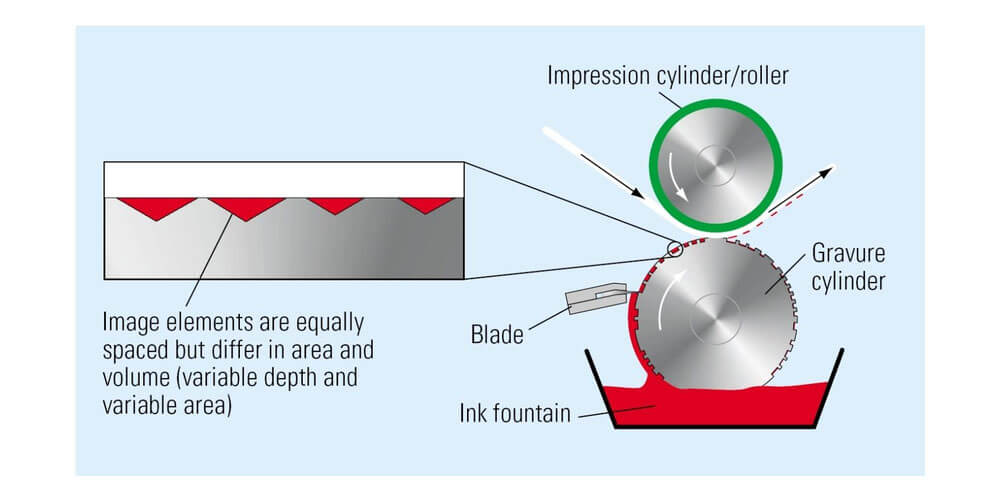The printing industry is one of the largest markets in existence. The continuous growth of the industry can be attributed to the constant introduction of novel and better technologies. One of the top printing technologies that are currently very popular is Gravure printing. Gravure printing, commonly referred to as rotogravure printing, is a high-speed, high-speed, and long-run printing technique. It involves engraving images onto a carrier. This is done on a cylinder that works as gravure printing plates. This method is often compared to flexographic and offsets printing because it utilizes rotary printing presses. Gravure printing is done using a gravure planting machine.
Components of a gravure planting machine
Gravure printing or plating machines feature several vital components. The components work together to produce the final product. They all have a specific purpose. Below are some of these components;
1. The engraved cylinder
Sometimes known as the gravure cylinder, this is one of the essential parts of the gravure planting machine. The cylinder is usually engraved with the image that you want to print. Through engraving, the cylinder surface will get curved into cells. The cells feature different dimensions which must be carefully set. The cell is where the ink will get transferred so that it can be transferred to the substrate. The substrate, in this case, is paper. For darker and intense colors, large and deep cells are an incredible choice and vice versa. These cylinders are typically made from steel or plated copper. Ceramic gravure cylinders are also popular.
2. Ink fountain
The ink fountain is the component where the ink is stored. It is then transferred to the cylinder carefully and precisely.
3. Doctor blade assembly
The role of the doctor blade is to remove the excess ink from the non-engraved portions. Since there are several cells on the engraved cylinder, there is also an assembly of doctor blades. The blades can also create a uniform layer of ink before it is transferred to a printing plate. Note that conventional doctor blades used in other techniques of printing like flexographic are typically inexpensive.
However, in gravure printing, the doctor blades are the most expensive component of the machine. This is because they play a significant role in the final product’s quality. For this reason, they are usually made using high quality and expensive materials like steel. In gravure printing, the doctor blades are generally plated with hard-chrome.
4. An impression roller
The impression roller’s role is to apply force to ensure the whole substrate comes into contact with the cylinder. Coupled with the gravure cylinder, the impression roller sandwiches the substrate. The impression roller, therefore, helps to ensure even and maximum coverage.
5. Dryer
The dryer’s role is to ensure the substrate is completely dry before it moves to another color unit. Therefore, the inked substrate has to go through this component.
Conclusion
Note that this printing technique allows for more ink to paper than any other printing process. It also produced high-quality products. For this reason, it is commonly used by newspaper and magazine companies.
